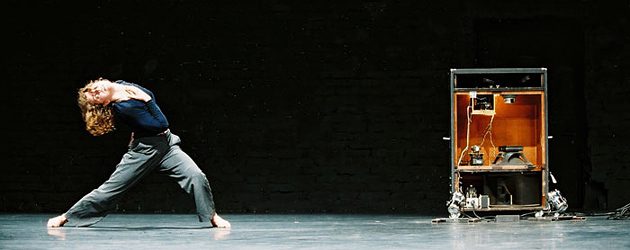
When IBM chief maintenance engineer Jóhann Gunnarsson started tinkering with the IBM 1401 Data Processing System, believed to have been the first computer to arrive in his native Iceland in 1964, he noticed an electromagnetic leak from the machine’s memory caused a deep, cellolike hum to come from nearby AM radios.
It was a production defect but, captivated, amateur musician Gunnarson and his colleagues soon learned how to reprogram the room-size business workhorse‘s innards to emit melodies that rank amongst the earliest in a long line of Scandinavian digital music.
Fast-forward four decades, and recently discovered tape recordings of Gunnarson’s works form the basis of a touring song-and-dance performance, IBM 1401: A User’s Manual. The show was composed by Gunnarson’s son Jóhann Jóhannsson, with interpretive dance choreographed by Erna Omarsdotti, whose father is another IBM alum.
The work, named in part for a companion recording of a voice reciting the manual for an IBM 1403 printer, was performed in Wales, Tokyo, Copenhagen and Belgium this summer. Part of the original 1401 recordings were scored for a 60-piece orchestra, which Jóhannsson has adapted for piano and Hammond organ. Omarsdotti’s mechanistic body movements channel the whirring of the primitive machines — music to the ears of fellow IBM-heads.
IBM 1401: A User’s Manual live in Dro, Italy in August 2006.
“We’ve sometimes had older tech guys my father’s age who have shown up, not because they’re dance or music enthusiasts, but because they recognized the name of the machine,” Jóhannsson told Wired News. “We had a group of people from (particle physics lab) CERN when we played in Geneva. It’s great to hear reactions from this group of people, as it really is like playing it to my father in a way.”
The performance comes amid a flurry of nostalgia for the IBM 1401, which was decommissioned in 1971 and is now the subject of a major restoration project at the Computer History Museum in Mountain View, California.
The 1401 once commanded a 25 percent share of the business-computer market, was credited with helping wean companies off punch cards and was leased direct for at least $2,500 a month.
But the creators of A User’s Manual see their work as much more than just a valentine to yesterday’s tech.
Jóhannsson aims to explore the relationship between the computer and his homeland, playing an old Icelandic hymn his father managed to coax out of the 1401, and is keen to find human qualities inside even the most arcane systems.
“I’m interested in the emotional bond that people develop for their machines,” he added. “The piece is about how we relate to machines, about how we as a species are largely machine-dependent and how this affects our relationship with them.
“It’s well-known that people are more likely to develop an emotional bond with machines and animals that exhibit humanlike qualities.”
That, Jóhannsson said, is why IBM staff, who had come to regard the 1401 as a musical friend over the years, held a “funeral” for the computer when it was decommissioned.
“I think the engineers formed an attachment to this machine above others they worked with precisely because they gave it these ‘human’ qualities — the ability to make music,” he said. “They felt they couldn’t just throw it away. They felt an emotional bond and therefore needed the closure that a farewell ceremony gives people.”
It was at that service that Gunnarson recorded the ethereal compositions. Now, after a three-year, 9,000-man-hour effort, a team of retired volunteer IBM 1401 engineers are close to restoring the machine.
“The 1401s cost the equivalent of $2 million or $3 million in today’s money and had to run 24 hours a day — the engineers had a very important role, but IBM didn’t really care that they were using it to make music,” said Robert Garner, who is leading the restoration.
“Jóhann’s music is interesting — I kind of like it,” said Garner. “Our 1401 is nearly operational, so we could play music just like his father did.”